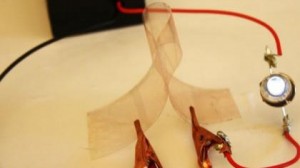Nanotechnology – the science of managing matter at a molecular level – has delivered its promises: if charging your iPod with your heart is not great, then what is? Yes, you read correctly: it is your own little human heart that could be doing the work of a charger, so that you can continue listening to your favorite music.
How does this work? Scientists have created a revolutionary chip out of zinc oxide nanowires, which generate electricity when stretched. How many nanowires? They are so small that literally millions got to shape up the chip. All you have to do is stimulate them: movements as small as a heartbeat, a pinch of a finger or larger ones such as walking would do.

This could be enough, but it’s not the sole reason why the chip is revolutionary: it is also thousands of times more powerful than anything scientists have come up with in the lab.
To have an idea about how powerful these nanowires really are, it seems that five of these particles put together generate about 1 micro ampere output current at 3 volts, which in terms of voltage is comparable to two AA batteries.
Dr Zhong Lin Wang from the Georgia Institute of Technology, the head of the team who produced this discovery, feels the energy of more nanowires and nanogenerators could power larger electronics – for example cell phones: “Our nanogenerators are poised to change lives in the future. Their potential is only limited by one’s imagination.” For these guys, sky really is the limit! …

 Follow
Follow
